The municipality of Telde is noted for its large number of archaeological remains, as this area was one of the pre-Hispanic kingdoms of the island of Gran Canaria. Visitors can see some of the most important archaeological sites, such as el Baladero, Tufia, Cuatro Puertas, Tara and Cendro.
The sites of Cendro, Tara and el Baladero are made up of a series of dwelling caves, at times of artificial construction and at other times made by taking advantage of caves of volcanic origin. The Baladero site is located right at the foot of the historic-artistic area of San Francisco, and was one of the most important magic-religious sites of the native culture. Tufia is the site with the largest proportions, both in terms of its caves and in the complex of houses of unhewn stone.
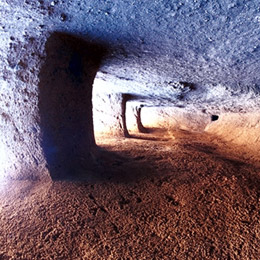
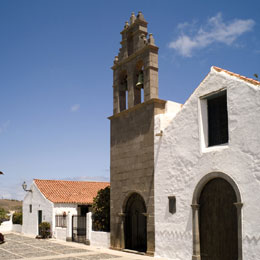
La Montaña de las Cuatro Puertas is a complex of caves which were inhabited by the natives. According to historians it may have been used as lodgings and as a work place by embalmers.
For visitors who wish to see the historic centre of the municipality of Telde a walk through the area of San Juan is a must. This area is the centre of the founding of the city. The main civil and religious buildings are located around the church of San Juan Bautista and the Plaza Mayor, making this the administrative centre of the municipality.
The highlight of the church of San Juan is its chancel, made up of two altarpieces, one of which is Flemish-Gothic and is framed by the other, an eighteenth century Baroque work. There is also the crucifix which was imported from America and made in accordance with an Indian technique using corn paste.
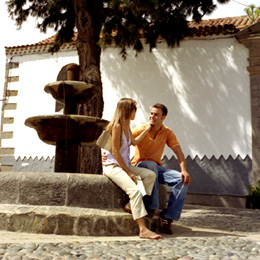
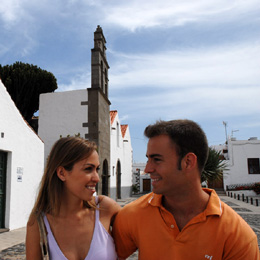
A visit to the city of Telde must also include a look at the area of San Francisco, made up of narrow, uneven streets sloping up towards the Santa María heights. San Francisco is characterised by its low-built houses with two-sided tiled roofs and long whitewashed walls interspersed with streets of unusual cobblestones. The church of San Francisco includes stone altarpieces of Santa Rita de Casia, Santo Domingo de Guzmán and Santa Lucía.
The historic visit ends in the area of San Gregorio, where craft centres and businesses are located. The church of San Gregorio includes neoclassical altarpieces and a carving of the Virgen de los Dolores (Our Lady of Sorrows).
Telde extends as far as the sea, among cliffs and beautiful sandy beaches of crushed lava. You can also visit lovely bays such as Gando, which was probably the first natural port of the island.
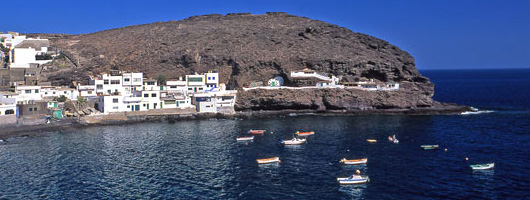
In Telde there is a variety of beaches, some of which hold mystery and beauty, such as the beach of San Borondón, reminiscent of the legend of the Irish monk Saint Brendan, and the beautiful beach of Ojos de Garza, home to the majority of the avifauna that frequents these coasts.
Within these almost ten kilometres of coastline lie the beaches of La Garita and Melenara, whose fine sand stretches for 600 metres and which are both known for their fishing tradition. For several years running and thanks to the services they offer, these beaches have been given the Blue Flag, which is awarded by the Environmental Foundation in Europe. There are also the beaches of Salinetas and Tufia which are a continuation of the old pre-Hispanic settlement that existed on the site.
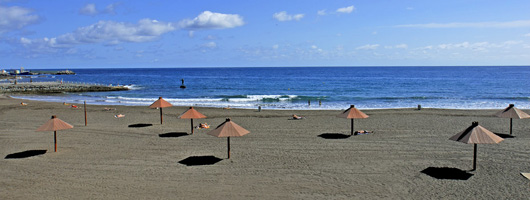
All these beaches are popular with bathers, due to the excellent weather conditions and the range of services on offer: restaurants, medical service, etc. Telde also has coastal footpaths which are well cared for and along which you can take enjoyable walks by the sea.
Telde is known as an eminently commercial municipality. Several establishments and shopping centres are laid out in the main parts of the city, primarily in San Gregorio. For buying furniture, Telde is the municipality to choose.
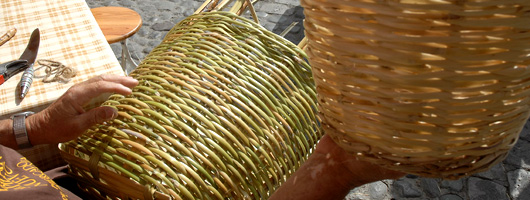
Visitors who prefer to buy craft items made in the municipality should know that the items typical of Telde are basketry, the popular Canary Islands knife, weaving and natural dyes, pottery and work on iron and metal.
Tourists can visit some of the craft workshops that can be found in the oldest areas of the municipality, where it is posible to see work being done on site and buy some of the products.
In addition, in the centre of Telde there is a street market on Saturdays and another one on Sundays in the area known as Jinámar, in which you can buy local produce and handicrafts.
The municipality of Telde has several beaches and coastal areas which guarantee visitors a pleasant place to try typical dishes of the Canary Islands cuisine, in particular those in which fish and seafood are the main ingredients. Platters of grilled fish such as red mullet, bass and bream can be found, as well as fried octopus, mussels, limpets and fried sand smelt.
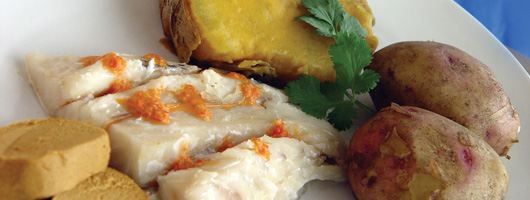
The popular sancocho, a typical dish of boiled, salted fish, the ‘pella’ de gofio (a block of toasted grains) and las papas arrugadas con mojo (wrinkled potatoes with a local sauce) are some of the other choices.
In the interior of the municipality visitors can also try rich and varied cuisine, with highlights such as the traditional potajes or stews, marinaded pork, fish soup, roast lamb and kid goat, as well as game, mainly rabbit in salmorejo sauce.
The local confectionary is based on very sweet desserts, such as bienmesabe (made with crushed almonds and honey) and huevos mole (made with beaten egg yokes).
One of the most traditional sweets of the municipality are the delicious tortitas de carnaval (carnival pancakes).
Telde: Download Tourist Brochure | Map | Audioguía: San Juan | Podcast: San Francisco
Accommodation: Telde
Would you like to learn about the production processes of olive oil?
Los Olivos Ecological Centre, in Telde, offers guided tours around its estate, where they show how olive oil is made. They produce olives ecologically, and show you around their olive press and store.
For further information, go to: Centro Ecológico Los Olivos